The Byrds Look Through Their Back Pages in Stunning New Photo Book (EXCLUSIVE)
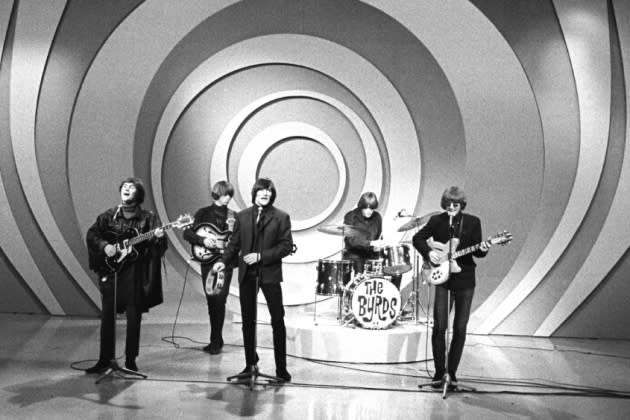
Anyone who clicked on this article knows that the Byrds are one of the greatest and most influential rock groups of all time: They weren’t only influenced by the Beatles, they influenced them; they showed the world that Bob Dylan songs could rock; and via their own songs like “Eight Miles High,” “So You Wanna Be a Rock and Roll Star,” “I’ll Feel a Whole Lot Better” and “Time Between,” they paved the way for countless artists that followed, from jangle-pop to psychedelia to country rock.
Well, fans are getting the Byrds history they’ve always dreamed of with BMG Books’ stunning “The Byrds: 1964-67” — out Sept. 20 — which is a comprehensive oral history and a gorgeous coffee-table photo book all in one: The editors basically licensed virtually every known photo of the group from the era, sat down with surviving founding members Roger McGuinn, David Crosby and Chris Hillman and got them to share their memories of the moments, the band, the era, each other and lots more. (The book follows the group as it gradually goes from a quintet to a quartet to a trio, and leaves off before Gram Parsons’ arrival in 1968, which launched a whole new chapter of the Byrds.)
More from Variety
Crosby, Stills & Nash Song Catalog Back on Spotify After Removal Over Joe Rogan Protest
David Crosby Reveals He Has Retired From Touring: 'I'm Too Old to Do It Anymore'
It’s an inspired approach that we’d love to see many more artists follow — see below for several excerpts that give a taste of the book, followed by info on the multiple editions of the book.
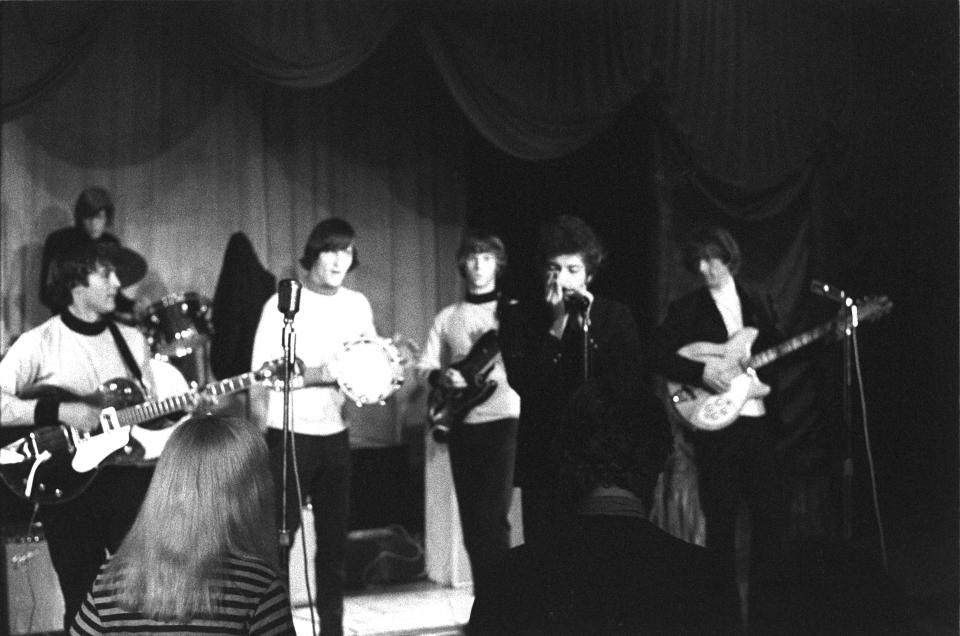
On March 26, 1965, shortly before the release of the “Mr. Tambourine Man” single, Bob Dylan showed up at Ciro’s, the Hollywood club that launched the Byrds, and ended up onstage with them.
David: Dylan came down a lot. He only sang once. He got photographed once. I remember he and I going out to a coffee house on Sunset Strip and having to leave. People would just gawk. Finally, Bob turned to me and said, “We should get out of here.”
Roger: This wasn’t rehearsed. Bob just came up and started jamming with us. There’s another picture from that night on the back of our first album. He loved our version of “Mr. Tambourine Man.” He and Bobby Neuwirth came to our rehearsals at World Pacific, and they listened to it. He said, “Wow, you can dance to it.” It was a revelation.
Chris: That was a great night when Dylan came down. I have no idea why we were wearing matching shirts, but, yeah, Bob Dylan gets up and sings “Tambourine Man” with us, which was cool. He liked how we did it. I think [the Byrds’ original manager] Jim Dickson tipped us off that Dylan might come, but we didn’t rehearse or anything.
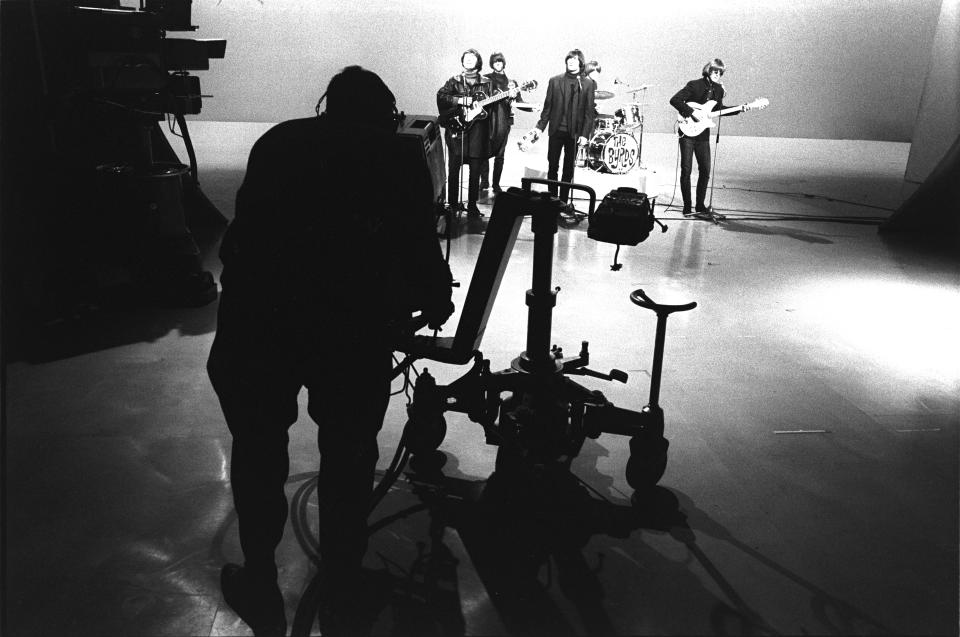
In December of 1965, The Byrds made their one and only appearance on “The Ed Sullivan Show,” performing “Turn! Turn! Turn!” and “Mr. Tambourine Man.”
Chris: There was a time element, which is totally rational, in the sense of a live TV show. They wanted to cut some of the song down. A very simple request. David was upset.
Roger: Crosby blew up. He said, “This is our art, man!” He called the guy a name I won’t repeat, and the director said, “I know what you are. You’re just a punk. You’re not fooling me with this mod stuff.” It got really heated.
Chris: The director says, “Do you know how many acts we’ve had on this show? You’re not going to be on the show.”
Roger: Well, it turned out the director was Ed Sullivan’s son-in-law. He went back to Ed and told him what happened, and Ed kicked us off the show.
David: I don’t remember that at all. I know there was some kind of conflict with the director. I remember that, but I don’t remember why or how.
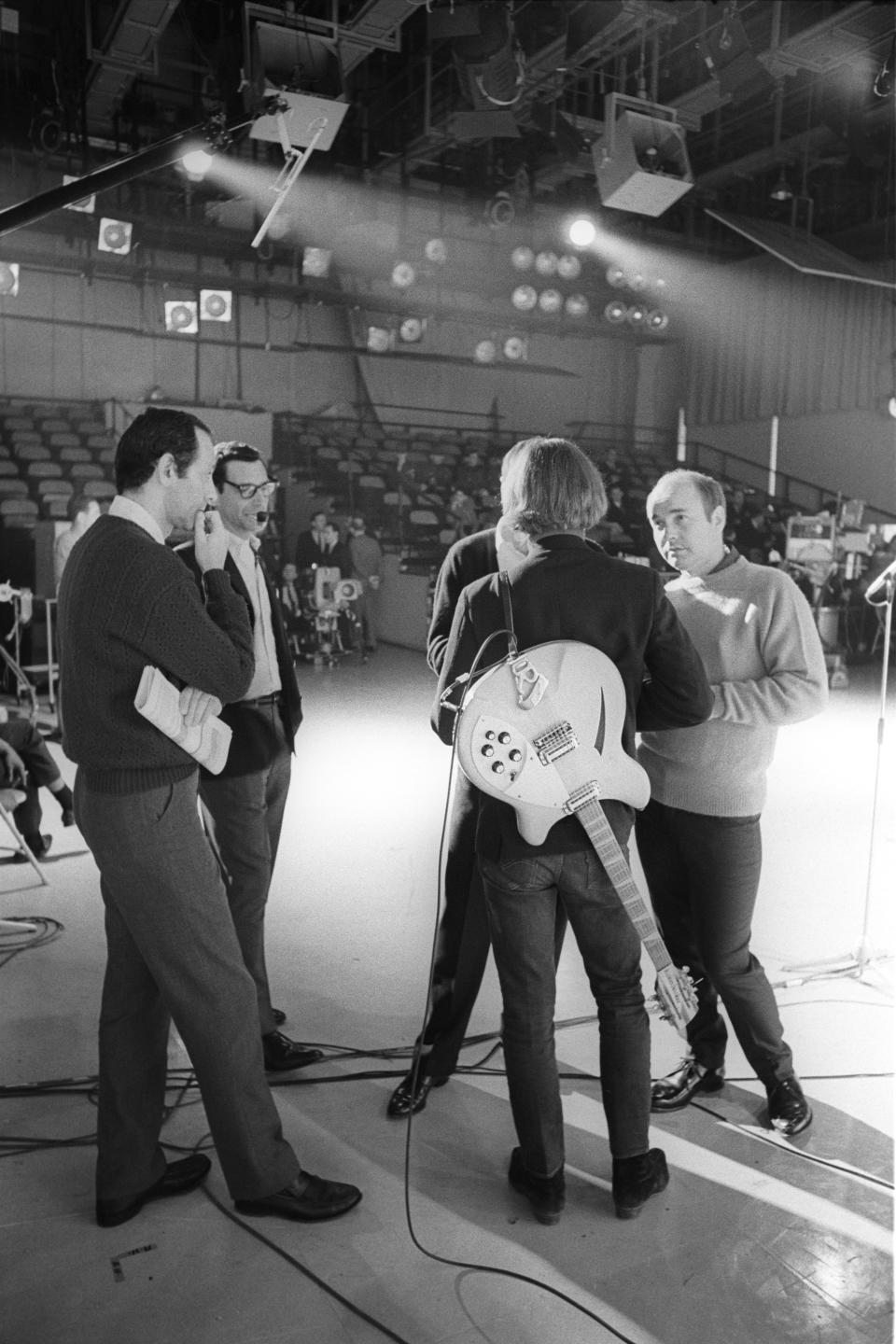
Chris: The drama unfolds. We’ve either already been fired or are about to be fired.
Roger: This is a tense meeting with the production crew. That’s Jim Dickson, on the right, trying to get us reinstated. He pleaded and pleaded with the director. He said, “Come on, they’ll be good, they’ll be good.”
Chris: Dickson tells him, “We flew out here, I’m so sorry. He’s just not feeling well,” or something. Amazingly, they let us back on to do our two songs after Dickson begged them.
Roger: We ultimately got to do the whole song with all the verses, but we never got invited back. We were blackballed thanks to David. The whole scene was a nightmare.
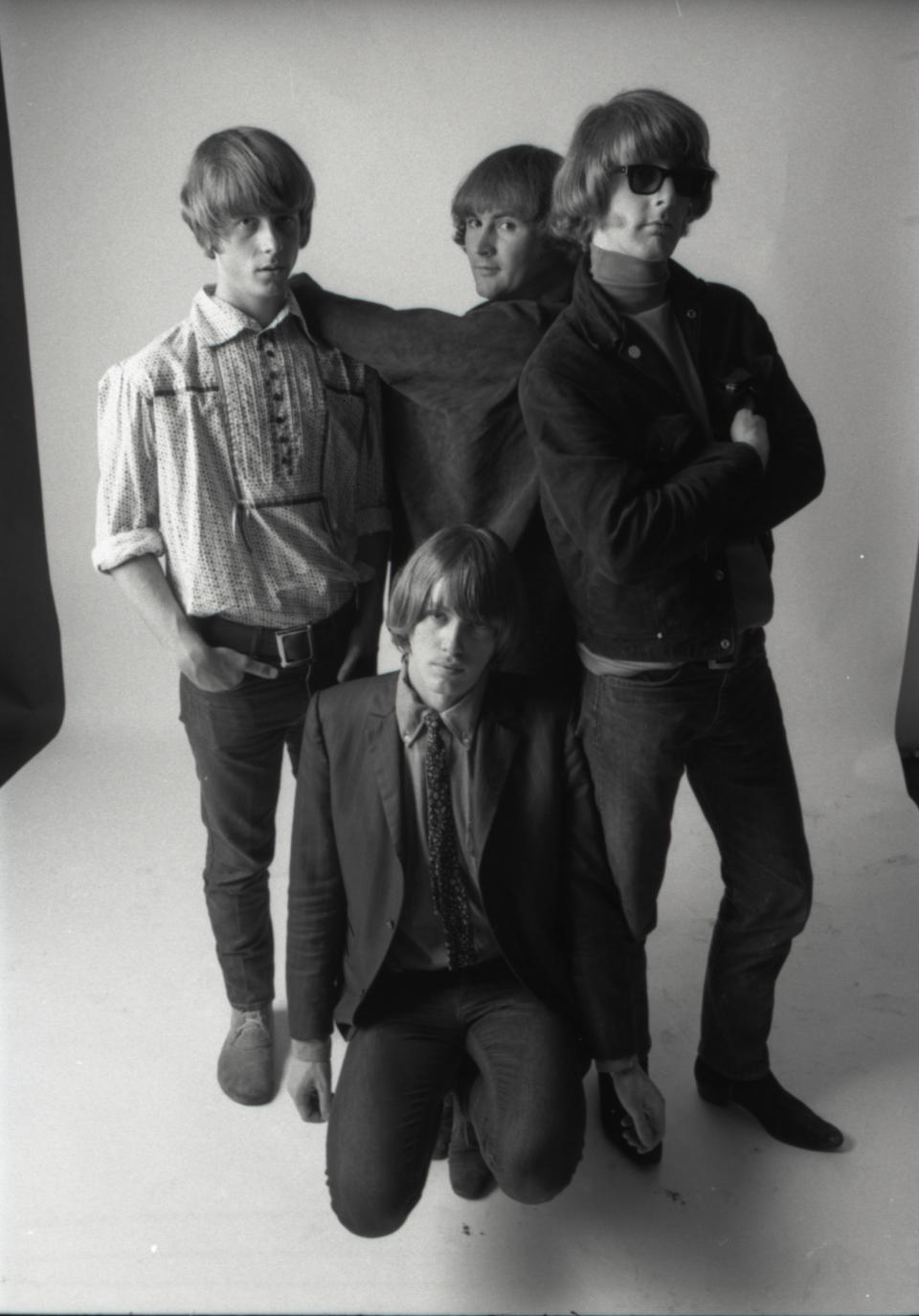
In February of 1966, lead singer Gene Clark suffered an apparent panic attack on a plane as the group was preparing to take off for a flight. Afraid of flying, he became convinced that something was wrong and departed the aircraft. That was the end of his original tenure in the Byrds. The band was scheduled for a TV appearance, a photo shoot, and a press conference at Columbia Records’ New York offices. They continued on as a four-man lineup.
Chris: These are photos for the “Fifth Dimension” album, which were done at Columbia’s studio in New York. Roger has moved on from the square glasses to the Ray Bans, and I’ve moved on to moccasins and silly hair. Look how skinny we all were. Just boys!
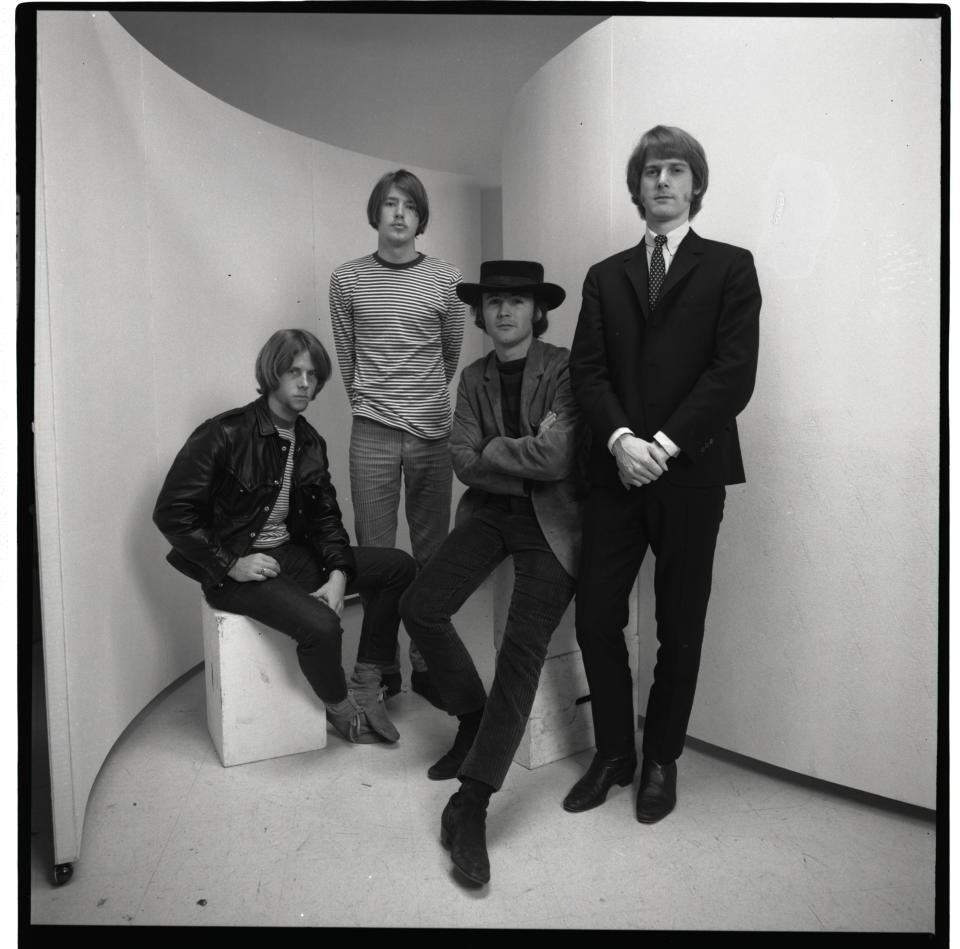
Roger: This was during the era when we came up with “So You Wanna Be a Rock and Roll Star.” Some people thought it was a dig at the Monkees, but it wasn’t. I knew Peter Tork back in the Village. We used to play the same coffee house. He was a banjo player then, like Pete Seeger. And Mike Nesmith and I became friends. I used to go to his house in the hills. But we were going through Tiger Beat or one of those magazines and noticing that somebody could be a star for a week and that was it.
David: That is a great shot of Roger. He looks like a spy or something. I love that shot.

Chris: By the start of 1967, I was finally letting my hair just do what it was going to do. There was a wonderful woman who we met and guided us along named Carole Eastman. She was a very successful screenwriter and actress. She had written for “Alfred Hitchcock Presents” and, later, for the film, “Five Easy Pieces.” She loved Gene Clark, and she put us together with this great hair stylist, Don Moran. He had worked on movie shoots for years and was very well known in those circles. One day he said to me, “What are you doing with that hair? Look, just let it be what it’s supposed to be. Look at Bob Dylan. Bob has the same hair as you, and is he suffering?” Don put an end to the hair straightening. He said, “Just wash it, dry it, let it be.” I said, “Okay. You’re right.”
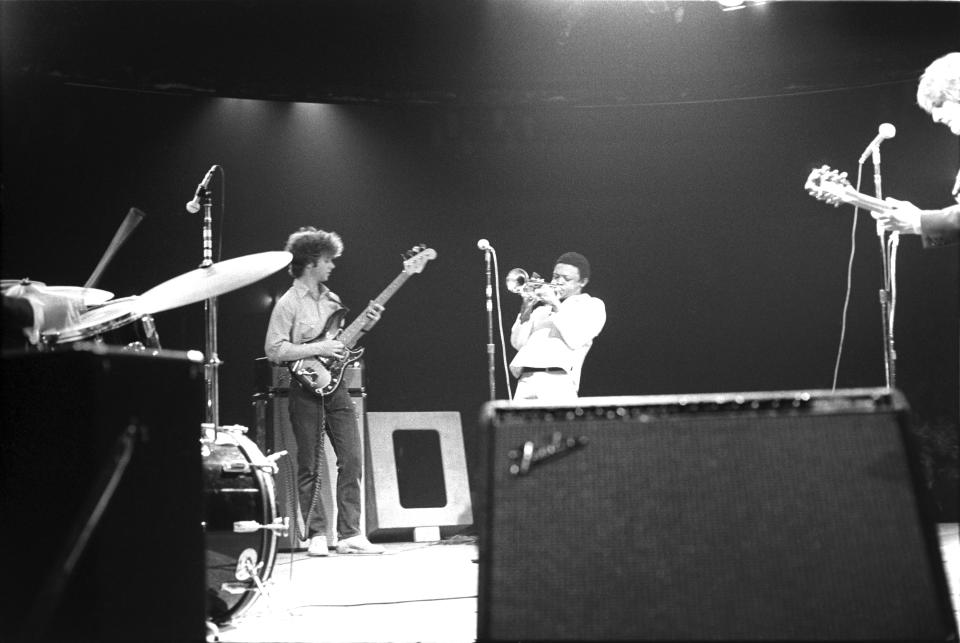
Roger: That’s Hugh Masekela playing with us. David met him somewhere, and Chris and David played on a session with him. I didn’t know him, but I met him through them. I think, at that point, he was managed by a guy named Larry Spector, who managed Peter Fonda. Larry Spector eventually ended up managing the Byrds.
David: Hugh Masekela was my friend, and he was a wonderful cat, man. I think Mama Cass introduced me to him. Very funny, very human, very unpretentious. Sweet guy. Everybody I knew who ever hung out with him liked him. He was the one who explained to us what was going on in South Africa. They asked us to play there, but it was a segregated audience. We said no because Hughie told us what it was like.
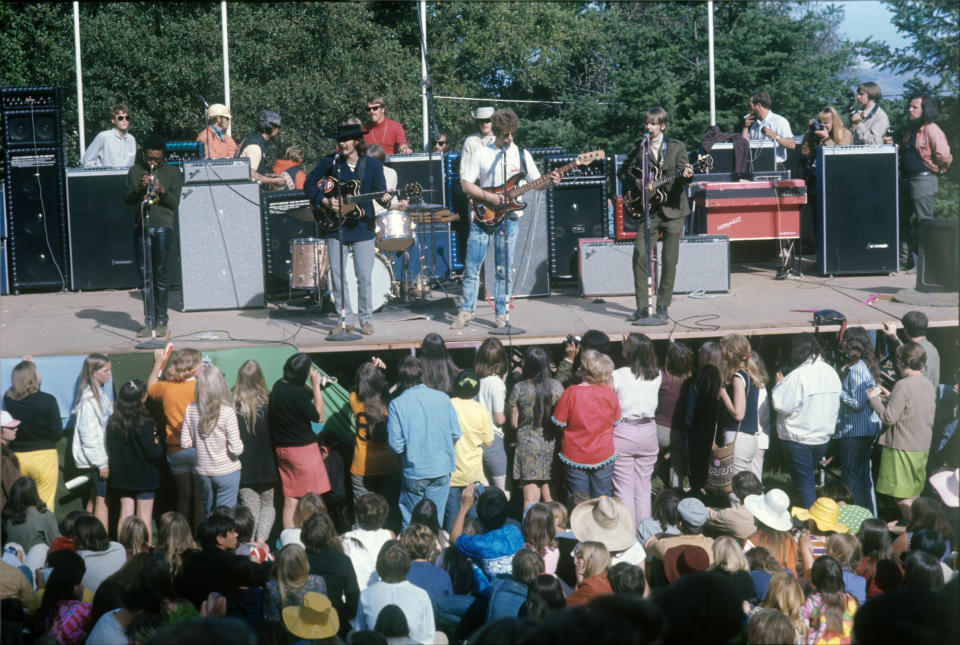
Chris: That’s Mount Tamalpais, in Northern California, where we played shortly before the Monterey Pop Festival [in June 1967]. It was called the Magic Mountain Music Festival.
Roger: You can see that it was more informal then. People are just kind of hanging out everywhere.
Chris: Hugh Masekela joined us once again. It was a relaxed show, you can see various people all over the stage.
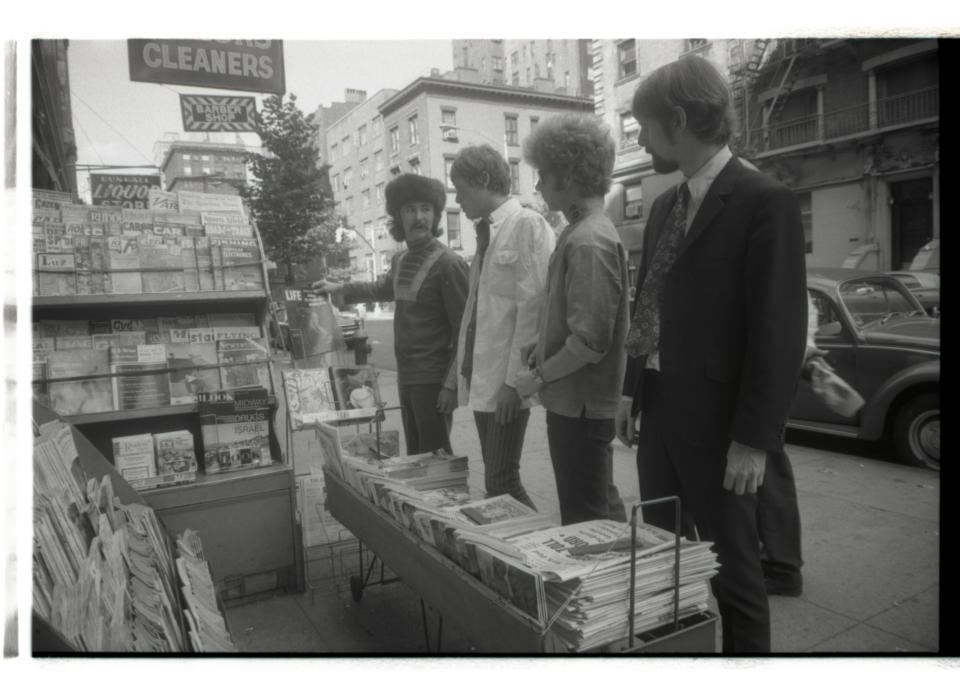
Roger: David and I had an argument that day. We were up at the Columbia offices when Paul Simon came in. I had worked with Paul when I was a session musician in New York, and I played on his demo of “The Sound Of Silence.” But I didn’t remember that at the time. David said to Paul, “Hey man, we’re playing tonight, you should come down.” Paul said, “Well, I don’t know. Maybe I’ll go.” I was kind of cranky and I said something like, “Well, you don’t have to go to the gig, man.” Paul said, “I know I don’t have to.”
Chris: David thought Roger was not being polite to Paul Simon. I don’t know what happened, but Paul leaves. It wasn’t in a huff or anything. Then David says, “I can’t believe you treated Paul Simon like that.”
Roger: It was just this little exchange, but David got mad. He said, “Are you so jealous of Simon and Garfunkel that you’re acting like that?” We just got into it with each other. And then David said, “Millbrook’s off!” Timothy Leary had a sort of acid commune in north upstate New York, in a town called Millbrook. We were going to go there, but David was the liaison between Leary and us. I just remember him saying, “Millbrook’s off.” So, we didn’t get along for a while after that.
David: It’s funny because now I don’t have any memory of that whatsoever!
Chris: Maybe this was the beginning of the end.
The Byrds: 1964-1967 is available in four editions. Each is an oversized 10.5 x 13 inch large-format presentation with more than 500 photographs across 400 pages. Printed in Italy on 200 gsm premium art paper, all versions feature quality thread-sewn binding and a luxurious quarter-bound casing. All versions of the book are available for presale at www.byrdsbook.com. |
Best of Variety
'The Sopranos' Gets the Funko Pop Treatment in New Collectibles Release
From 'The Sandman' to 'Blonde': Books Made Into Movies and TV Series That You Should Read
Jennette McCurdy's Provocative Book 'I'm Glad My Mom Died' Is Already a No. 1 Bestseller
Sign up for Variety’s Newsletter. For the latest news, follow us on Facebook, Twitter, and Instagram.
